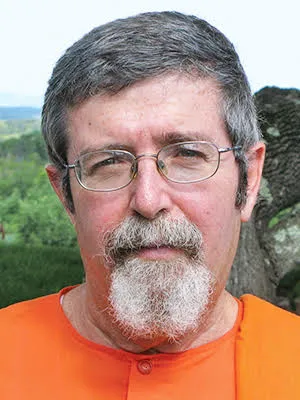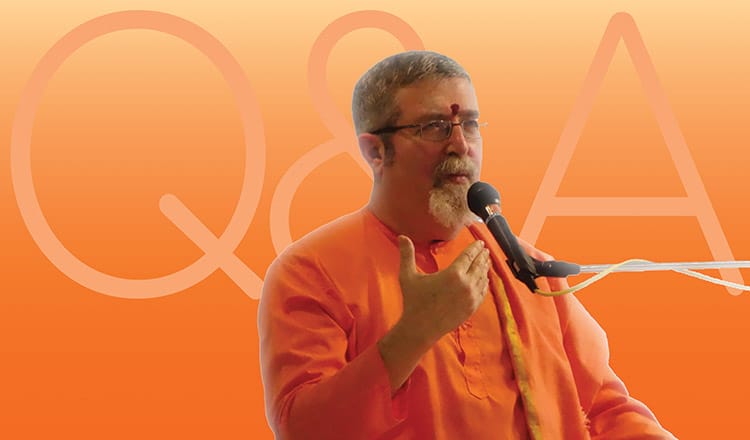Sivananda Bahamas Blog
Expand Your Horizons …
Our Blog
How to Love without Attachment
Question: What is detachment and how do we love with detachment?
Answer: Detachment means detachment from suffering and the causes of suffering. This is one of the great teachings in yoga. Long before Lord Buddha, the yogis taught about samsara, about that mode of existence that is nothing but suffering. We are born, we live, and we die. And the yogis say that in between death and the next life, there is a type of existence — birth, life, death, existence after death, and again birth. It is a cycle we repeat, again and gain. This cycle of birth and death is called samsara. Lord Buddha propagated this teaching very powerfully.
Long before Lord Buddha, the yogis said samsara is full of pain. Now, you may say, “Nah, Swami, this is not true.”
Why? Because it is true in our lives that we experience pain, but we also experience pleasure. So you think, “How can you say that? These yogis must have been mistaken.”
Because they say samsara is full of pain, but my own direct experience shows me otherwise. My own direct experience shows me that life is not only full of pain, there is also pleasure. For example, today is a beautiful day; it is very pleasurable. Another day may be cold, less pleasurable, unless you like cold.
But the yogis proved, beyond any doubt that indeed even when we experience pleasure, this pleasure is masked pain. That pleasure is nothing but pain masked by assuming this form of pleasure; it is pain.
Sometimes people who suffer are more fortunate than those that do not suffer. Why? At least they know that samsara is full of pain. There are people who do not know it, and they cannot know it. They think those swamis are talking nonsense. But the swamis are not talking nonsense. They are proving it logically. They are showing it logically and samsara is full of pain. The main cause of pain was first taught long before Lord Buddha. The main cause of pain is what we call karma. And the main cause of karma is what we call desire.
DESIRE
Desire has two forms. One we call raga, which is attraction to what is pleasurable. The other type of desire is called dvesha, aversion toward the painful. These are the two types of desires. Desire toward the pleasurable and aversion toward the un-pleasurable pushes us into action. If you see an object, and it is desirable, you need to act in order to possess the object and to experience it. If you see an object that you think is painful, and you have aversion toward the object, you try to escape the pain of the object, and you need to act in order to escape the pain. That action is called karma. That action is responsible for that cycle of samsara, the cycle of birth and death. That karma can only give two types of fruit: sweet or bitter. In other words, action gives two types of fruit, pain or pleasure. Nobody has to prove that pain is suffering. This is clear. Nobody has to prove, as Swami Sivananda says, that 90 percent of our life is pain. It is a grand illusion to not believe that samsara is pain.
Let us say, right now, that we have a nice time. We sit together and we have satsang. Then we are going to eat. Some will go to see a nice movie. You are going to sleep in a nice bed. And, as we are doing these actions, billions of people on planet Earth are leading a hellish type of life. Did you hear about it? Hundreds of millions are hungry. In Christianity and in Judaism, we speak about the end of the world. There are people for whom the end of the world has already arrived. Think about the tsunami in Japan. Swami Sivananda would say foolish people see suffering around them and think, “This is not going to happen to me.” Why? Foolish people are suffering because they are fools. They see death all around them, and they think, “This is not going to happen to me.” Oh yes, it is going to happen. Nothing fundamentally changes. It is going to happen.
The desire that I am talking about is called raga-dvesha. This is what we call attachment, attachment to the pleasurable, and attachment or aversion toward the un-pleasurable. Attachment is nothing but a form of desire. It is an addiction to a desire. That attachment, in a manner of speaking, is the direct cause of karma. And karma, in a manner of speaking, is the direct cause of samsara. And samsara, in a manner of speaking, is nothing but misery.
THE CAUSE OF SUFFERING
Yogis identified this problem long ago and asked themselves the question, "What is the cause of samsara? What is the cause of attachment? What is the cause of karma? What is the cause of suffering?” If you know the cause, you are on your way to find the remedy.
And they found that the cause of samsara is ignorance. They called it spiritual ignorance, or avidya. They said that the reason we suffer is because we have the wrong type of knowledge about reality. It is not just not knowing what reality is, since not knowing is not too bad. It is misapprehension of reality. It is not just non-apprehension of reality, it is mis-apprehension of reality. Avidya, ignorance, is mis-apprehension of reality due to non-apprehension of reality.
The classical example that is given is of the rope and the snake. A person at twilight sees a rope and thinks that the rope is a snake. Due to ignorance of the fact that it is a rope, there is a misapprehension that takes the shape of a non-existing snake, an illusory snake. The yogis said, “Ignorance is a mis-apprehension of reality. And reality is the reality of the Self, but also the reality of the other.”
ATTACHMENTS
Now think about it. Tonight, before you go to sleep, take a notebook and write a list of all of your attachments. Maybe there will be 10, maybe 100. Maybe there will be 2,000 of them. Maybe you have to spend the whole night writing. Then, look at all of these attachments, and ask yourself, “How many more attachments would I like to have?” “I have 2,000. How many more would I like to have? Would I like to have 2,000 and one?” Does anyone think, “Oh, I have 2000 attachments; that is not enough!?” Does anyone think one attachment is happiness, two attachments is greater happiness, and 2,000 attachments is ecstatic happiness? Does anyone think like this? Write it down, and sincerely ask that type of question: “Do I want more?”
If we are sincere, the reality is that each attachment is like a shackle, and we are shackled in chains. Not one chain — thousands and thousands and thousands of chains. We are imprisoned in chains of attachments, which bring suffering. Why?
CHANGE
You may desire whatever you like; it does not mean that you are going to get it. The second thing is even if you get what you like, guaranteed, you are going to lose it. Does anyone doubt that everything changes? Is there anyone who doubts that something that appears will disappear? Does anyone doubt that everything will go away?
And even if it does not go away, let us say that I am attached to an object. The likelihood that I am going to possess the object is not very high. Once I possess the object, there might be a moment of pleasure. But the likelihood for that pleasure to last is very small. The likelihood for that pleasure to go away is very great. The likelihood that I am going to suffer due to this attachment to the object is very high. Everyone knows this.
Now, let us say the object is there. Do you doubt the fact that the object changes moment by moment? It is not the same object. I fell in love with this object. The next moment, it is not the same object. It has already changed. Let us assume that this is a miraculous, unchanging object. You are not going to find such a thing, but let us assume. You found a miraculous, unchanging object and the object does not change. So now it is you who are going to change. And this is what happens in our lives.
ELIZABETH TAYLOR & RICHARD BURTON
Remember Elizabeth Taylor and Richard Burton? Richard Burton bought her that wonderful diamond. And when he bought her the diamond, oh, it was a great love story, and she said, “I love you, honey.” And Elizabeth Taylor took that diamond and she put it in the safe. Then later on there were saucers flying in the kitchen, she told him, “Go to hell, honey.” But that diamond was still there. In fact, diamonds are among the most durable substances. Relatively speaking by comparison to other substances diamonds do not change much. The diamond was in the safe. The diamond did not change. But Elizabeth Taylor changed. Richard Burton changed. The diamond was still there. The love was not there anymore.
And she would look at the diamond; at a certain moment that diamond reminded her of Richard Burton, toward whom she then had an aversion. Previously, it reminded her of Richard Burton toward whom she had attachment. Later on, she had such an aversion toward him, every time she would look at the diamond, she would remember him — and she hated that diamond.
THE CROW STORY
It is bad enough that we experience something pleasurable and it goes away. Now imagine that you are attached to it. What does it mean to be attached to it? You became addicted to something that is changing. Suppose there is a crow coming every day to your window - a lovely crow. You feed the crow from your hand. And day after day, the crow comes, and you become attached to the crow. I am not a prophet, but I can predict what is going to happen. One day, the crow did not show up. But you are attached to the crow. You ask yourself, “Where is my dear crow?” You check 10 times during the day and the dear crow does not come. Next day you check and the dear crow does not show up. There is so much anguish, because by now you are attached to the crow. You are attached to the crow coming. Then, you go to a wise person, and tell him, “I suffer so much because of that crow. He disappeared. What should I do?” The wise man tells the person, “Do not get attached to things that fly away. Do not get attached to things that fly away.”
Now, let us think about our attachments. Our attachments are to things that, like the crow, fly away. Try to find one thing that does not fly away, including this body, including beauty, including youth, including intelligence, including wealth. Do not get attached to things that fly away. You are going to suffer.
THE RELIEF OF SUFFERING
Understanding the nature of samsara, the nature of reality, the yogis advise us not to get attached to things that fly away. Develop the power of non-attachment; then, guaranteed, you will be relieved from suffering. It is guaranteed. What is left is to learn the method of how to do it, because it is not easy to do and it is not just one addiction. There are many addictions — millions.
You have a field full of thorns. Each thorn is an attachment, millions of thorns. Now, you are barefoot, walking on these. The point is that you fell so much in love with those flowers, not knowing that they are going to turn into thorns. By the time that you realize that they turn into thorns you are deep, deep into the middle of a vast field.
Now you are barefoot in the middle of a vast field of thorns. Each thorn is bringing you pain. So you ask a wise man, “What do I do?” Well, one way is to remove every thorn from that field. But this is impossible.
The second way is to buy a carpet which is big enough to put over the thorns. This is also not very realistic. But there is a third way that is very intelligent and does not demand much effort. It is relatively easy: simply make yourself a pair of shoes. Make yourself a pair of shoes and then wherever you walk you will be protected from the thorns.
The thorns are our attachments, and yoga is the pair of shoes. Once you have the pair of shoes of yoga, you can walk amongst the thorns and they are not going to hurt you, you will not suffer.
THE PATH OF YOGA
Therefore, Swami Sivananda says, “Yoga is a sheltering monastery from the three fires, the three types of pain,” — it is like that pair of shoes. You cannot get that pair of shoes, you have to make them. You have to learn how to make them. Then you can teach others how to make themselves a pair of shoes. You understand now? Do not get attached to whatever flies away. That is good advice. Learn how to do it.
Life is still wonderful; it is even more wonderful. Not being attached means being free, being able to love. In love, there is no fear of it. In real love, there is no fear. In attachment, there is fear of loss. There is always fear of loss in attachment. Not so in love. Love is freeing. It is very desirable to be free of attachment, but it is not easy. It is there in yoga. Yoga is the pair of shoes.

Swami Swaroopananda is a senior disciple of Swami Vishnudevananda. A practicing yogi from a very young age, Swami Swaroopananda has dedicated his life to the practice and teaching of yoga. He taught in Yoga Teacher Training Courses around the world and is currently teaching advanced yoga philosophy courses and lectures internationally. He is Director of the Sivananda Ashram Yoga Retreat and acharya (spiritual director) for the Sivananda centers and ashrams in the Bahamas and the Middle East. He is a member of the Board of Directors of the International Sivananda Yoga Vedanta Centres.
Upcoming Courses
Enjoy a delicious vegetarian feast, a reading of the Haggadah, Passover chants, and teachings on Passover’s relationship to yogic principles.
In honor of the Sivananda lineage and Swami Swaroopananda's birthday, we invite all guests, friends, and residents of the ashram to come together for a celebration.
During this special time of year we invite you to join us in celebrating wisdom, love, compassion, and the transcendence of artificial barriers.









One thought on “How to Love without Attachment”
Melesa Kravitz
Beautiful Story. Still learning how to make those shoes ..thank you sooo much..
debra kozak
During my three months experience as a karma yoga at the Sivananda Ashram in Bahamas I picked up the Bible due to my initial early learning at the United Church of Canada which I joined as a girl of 11.
Then I fell out of spiritual study etc. but have since kept up a spiritual quest for my long lost soul.
I realized at the Ashram that Sivananda was the ideal “Christian” in all of his teachings; attitudes and strengths so I knew I had found some kind of greatness and felt humbled by this knowledge.
Also I realized the Christian symbol of the cross to me means the historical paths crossed by both the Christians and our Jewish friends and how the oneness is more than a possibility but a great probability.